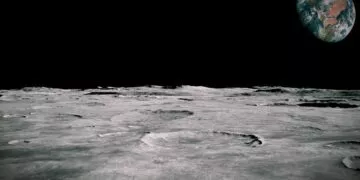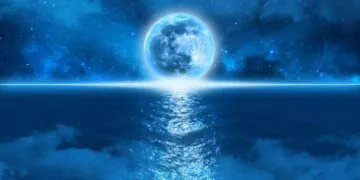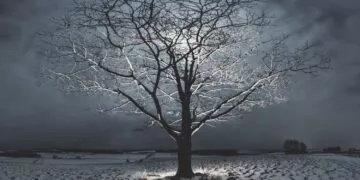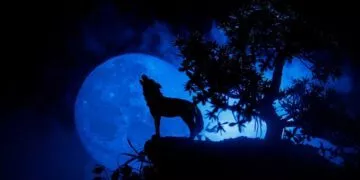The Moon is essential to our existence; without it, we wouldn’t have as strong (if any) tides.
There would be no eclipses or a way of creating conventional calendars to keep track of time. While we use a solar calendar, our months are based on the lunar cycles.
Did you know that there are eight different types of Moon within a lunar cycle?
We have all heard of a Blue Moon, Full Moon, and maybe even a Blood Moon, but what does it all mean?
Below are all the different types of the Moon that we commonly use.
What are Moon Phases?
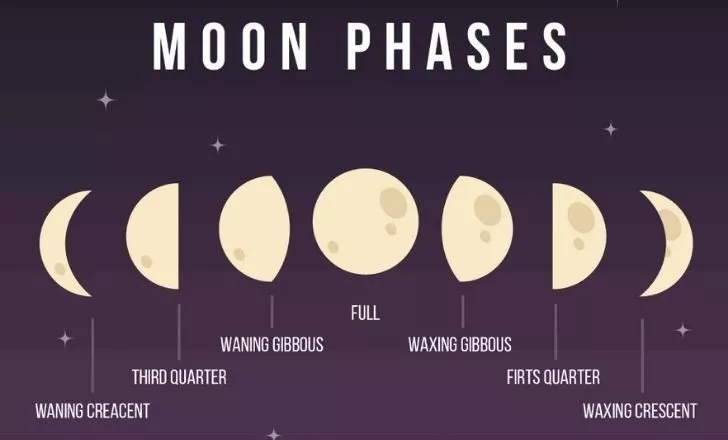
We divide the moon cycle into eight phases within the western world.
This means that there are eight different moons within one cycle, known as a Lunar Month.
The cycle lasts for around 29.5 days, so it is not quite a whole calendar month, but this was used as a tool to create the calendar we use today.
The cycle outlines the journey of when the Moon transitions from being a New Moon to a Full Moon and then back to being a New Moon for the cycle to repeat itself.
So why not check the sky tonight and see what stage of the cycle we are in?
Here are the eight different phases explained.
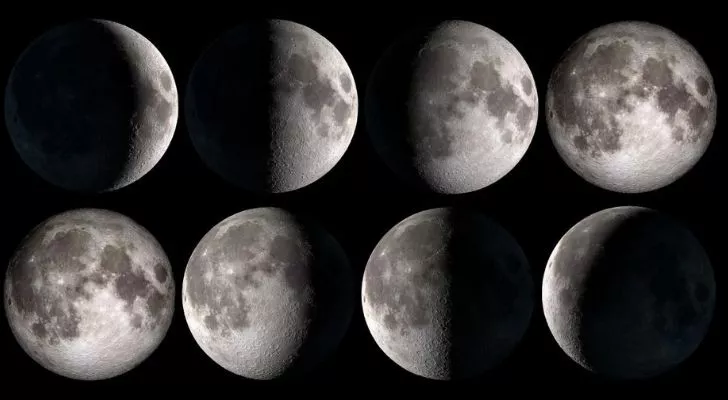
New Moon.
The beginning of the cycle starts with the New Moon, which is invisible to us.
This is because it is the time in the cycle where the Moon is directly in line with Earth and the Sun, so the side of the Moon we see is cast with a shadow.
No direct sunlight can reach its surface on this side; therefore, it does not appear illuminated to us.
This is day 1 of the cycle.
Waxing Crescent.
The next stage is called the Waxing Crescent. Waxing means that it is growing or getting bigger.
This phase is when the Moon begins to move into a position where the sun starts to illuminate part of the Moon’s surface, so we see a small crescent appearing.
It remains the Waxing Crescent moon until it is around 49% illuminated.
First Quarter.
Following the Waxing Crescent comes the First Quarter.
We can see about 50% of the Moon illuminated, so it looks like a semi-circle.
This is also when the Moon has moved a quarter in orbit around the Earth.
Waxing Gibbous.
The Waxing Gibbous Moon is the phase when the Moon is at 51%-99% illumination, just after the First Quarter Moon.
This Moon phase starts from appearing to be half-illuminated to almost being fully illuminated.
Full Moon.
The Full Moon is when it has reached the opposite side of the Earth in orbit to the Sun.
This means that the Moon’s surface is in direct sunlight and can be illuminated in full for us to admire in the night sky.
The Full Moon remains for the 14th-15th day of the cycle and then moves into the next phase.
Waning Gibbous.
The Waning Gibbous Moon is basically the reverse of the Waxing Gibbous Moon.
The Moon appears in the transition from Full Moon, back down to a quarter visible.
This stage is when we see a drop from 99% illuminated back down to 51%.
Third Quarter.
The Third Quarter Moon is when the other half of the Moon is illuminated until it reaches 50%.
This is the sign that the moon cycle is coming to an end, and will soon be a New Moon again.
Waning Crescent.
The last stage of the Lunar Month ends with the Waning Crescent.
Waning means “getting smaller,” and this is when we see the Moon’s surface goes down from 49% illumination to 1%.
You will see the Moon go from being a quarter illuminated all way down until it is a small crescent.
Eventually, you will see nothing, and it will be at the end of the cycle.
What about a Dark Moon?
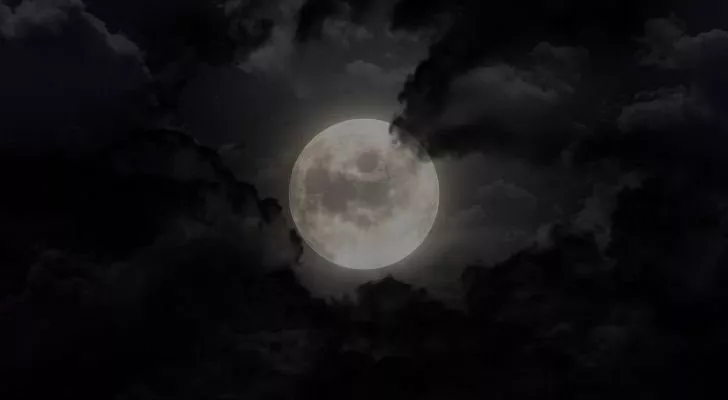
Finally, a name is used to describe the last slither of light that illuminates the Moon’s surface.
This is referred to as the Dark Moon; although it is a name for the cycle’s ending, it is not commonly used in the eight-phase cycle and by astrologers.
This moon occurs on day 29.5, the last day of the cycle before the New Moon appears.
Why does the Moon change color?
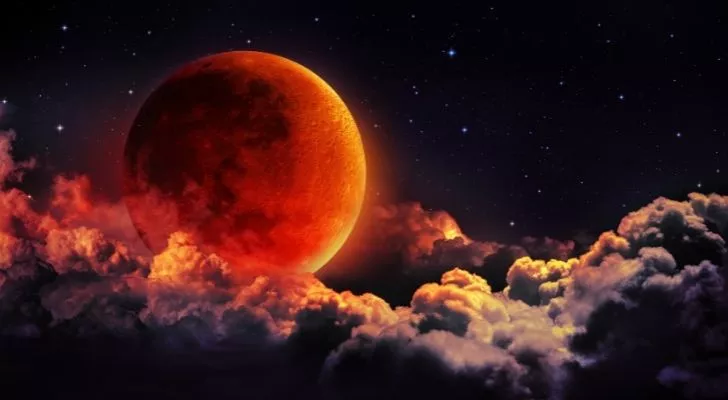
Four types of Moon can be seen in the sky, but these are rarer than the moon phases that we see every month.
These only occur in special circumstances and can only be seen from certain parts of the world.
Blood Moon.
Now that you have the basics of the Moon’s movements, you can understand that other types of Moon occur when another lunar activity is happening.
For example, when a Lunar Eclipse occurs, this is when the Earth sits directly between the Sun and Moon.
This means that the only light that can reach it — during its Full Moon stage — is light refracted from Earth.
This causes the Moon to appear glowing red, similar to when we have a sunrise or sunset.
Blue Moon.
The most commonly known Moon is the Blue Moon, which I am sure most of you have heard of.
If not, you might be familiar with the saying “Once in a Blue Moon,” which means not very common.
This, however, is not always the case for the sighting of an actual Blue Moon.
A Blue Moon mostly appears blue because of the dust affecting the lighting.
So when we look up, we see the Moon with a blue tint.
But this is not always the case, as the term Blue Moon is also used to describe that there are two Full Moons within one month.
It also occurs when there are four Full Moons within a season when there usually are three.
Is it a Black Moon or Invisible Moon?
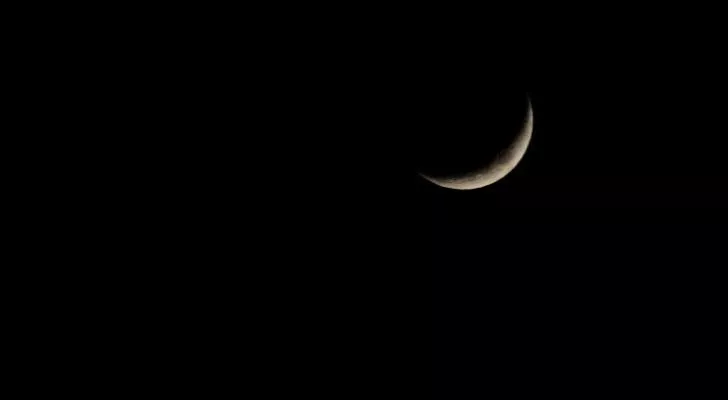
There is no exact definition for what exactly a Black Moon is.
This is because it’s a newer term created and popularized by followers of the Wiccan Religion and social media.
There are many definitions for what type of moon it represents, but the most common is that of the New Moon.
It’s mostly because the Moon is not lit up, and there is just darkness.
This can also be called an Invisible Moon.
Both terms describe the phase as the Moon is technically invisible because it’s not lit up in the sky.
Therefore, the term Black Moon can describe the darkness that we see.
The two names have also been used to describe the Moon when we experience a solar eclipse.
A solar eclipse is when the moon lines up directly between the Sun and Earth.
This means that the Moon blocks the Sun from Earth’s view, but it leaves a glowing ring around the Moon because the Moon is smaller than the sun.
The Moon can appear black as it is entirely in the shadow.
Does the Moon change size?
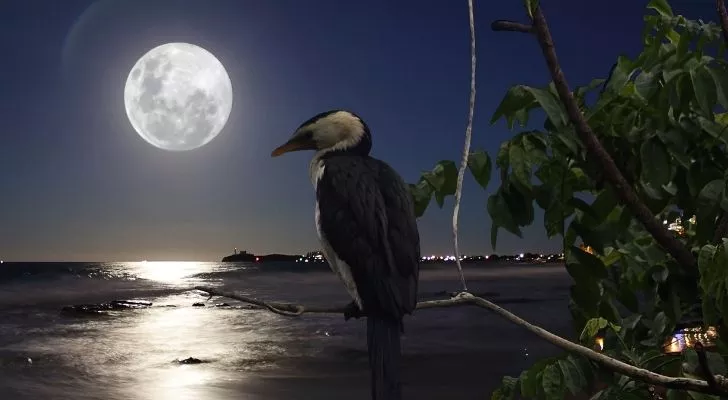
It may appear this way, but the Moon itself never changes size.
To us here on planet Earth, our perspective can change as the Moon orbits around us, making it seem like it can change size.
Micro Moon.
The first of these is called a Micro Moon.
A Micro Moon is when the Moon is at its furthest point from Earth.
This means that when we look up at the night sky, we think it may have shrunk, but it’s just further away than usual.
This usually only occurs when the Moon is at the Full Moon or New Moon phase.
The Moon orbits the Earth in an elliptical path, which means that one side of the orbital path is closer.
The Micro Moon occurs when the Moon is 251,655 miles (405,000 kilometers) away from Earth’s center.
Super Moon.
A Super Moon occurs when the moon is at its Full or New Moon phase and is on the closest part of its orbital path to Earth.
The Moon is at its stage in its journey where it is in the closest position to Earth, being 223,694 miles (360,000 kilometers) from the center of Earth.
So overall, you can see that we have many different types of Moon, which vary in shape and color due to the surroundings and our Moon’s position in its orbit around Earth.
But ultimately, we only have ONE Moon that orbits Earth; it’s just our perspective that makes it appear different.


